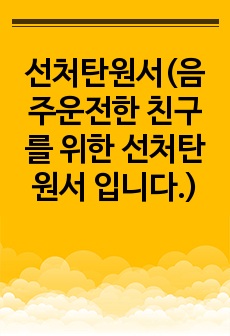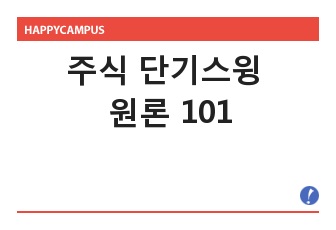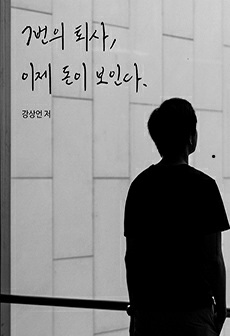RISK REDUCTION STRATEGIES FOR USING CELEBRITIES IN LUXURY BRAND COMMUNICATIONS
* 본 문서는 배포용으로 복사 및 편집이 불가합니다.
서지정보
ㆍ발행기관 : 글로벌지식마케팅경영학회(GFMC)
ㆍ수록지정보 : Global Marketing Conference
ㆍ저자명 : Karen W. Miller, Jane Summers
ㆍ저자명 : Karen W. Miller, Jane Summers
영어 초록
Currently, the luxury retail market exceeds one trillion dollars in sales (Aroche, 2015) and is proliferated by the use of celebrities as endorsers and luxury brand ambassadors (Buckley, 2015; Okonkwo 2010). The practice of linking celebrities in luxury brand communications dates back to at least the 1800s and while the successful usage of celebrities is widely documented (e.g., Agrawal & Kamakura, 1995), so too are the stories of catastrophes as a result of celebrity transgression, overshadowing or just poor fit. Even without negative publicity or inappropriate behaviours, the use of a celebrity can still present risks to the luxury brand. For example, where unintended meanings associated with the celebrities are transferred to the luxury brand (Walker & Langmeyer, 1992; Till, 1998) or when the popularity of the celebrity (e.g. Angelina Jolie) overshadows the brand (e.g. St John) (Buckley, 2015; Horwell, 2011; Rossiter & Percy, 1987; Till & Busler, 2000). Overshadowing isn’t the only risk luxury brand managers may encounter when utilising a celebrity to endorse their brand. If, for example, consumers don’t see a match between the brand and the celebrity, or if consumers perceive the celebrity as being irrelevant to the brand, or if the celebrity has lost their appeal and connection with consumers then the celebrity presents a risk for the brand image (Choi & Rifon, 2012; Fleck, Korchia & Le Roy, 2012; Till & Busler, 2000). The choice of the ‘wrong’ celebrity can be an extremely costly mistake, with loss of sales and/or damage to the brand equity and image of the luxury brand being the potential outcome (Carrillat, D’Astous & Lasure, 2013; Folse, Burton & Netemeyer, 2013; Halonen-Knight & Hurmerinta, 2010; Thwaites, Lowe, Monkhouse & Barmes, 2012).Risk reducing strategies and due diligence during the selection process is a lengthy, complicated and complex process (Erdogan, Baker & Tagg, 2001). Luxury brand managers have long called for a more systematic and objective criteria by which to evaluate the potential celebrity risk factors (Okonkwo, 2010; Toncar, Reid, & Anderson, 2007); and this paper takes up that call with three contributions to both the literature and to practice.
The first contribution concerns risk reduction strategies and extensions to the current thinking on the celebrity construct (for a thorough discussion on the celebrity construct see Gabler, 2001; Goldman, 2011; Rojek, 2001; Turner, 2004). There is a small stream of research that discusses the non-human celebrity as both a risk reducer for celebrity endorsement and also as an extension of the concept of ‘celebrity’ (e.g., Blewitt, 2013; Callcott & Lee, 1995; Folse et al., 2013; Giles, 2013; Rindova, Pollock & Hayward, 2006). This stream of research is novel and emergent and our work adds to this literature by defending our claim that like firms, animals, mythical beings and fictitious humans, events can also be celebrities. Broadening the conceptualisation of celebrity to apply to more than just real people, allows luxury brand managers to reduce costs, and regain some degree of control over the important image and reputational management of the celebrities with whom they wish to be associated
The second contribution is the Celebrity Criterion Checklist, which provides luxury brand managers with a simple, systematic and quick way to determine whether someone or something (an entity) is a celebrity or not (given at least 15 years of debate about the contest term of “celebrity”). The Celebrity Criterion Checklist contains five criterion. If a luxury brand manager finds the entity they are considering fulfils all five criteria, then the brand manager be confident that they are a celebrity.
The third contribution is the Celebrity Risk Evaluation Matrix (CREM). The Celebrity Risk Evaluation Matrix (CREM), facilitates higher-ordered assessments of the risk/benefit ratio associated with using different types of celebrities in luxury brand communications in a simple visual representation. Since celebrities are dynamic and have an ongoing narrative, celebrities can and do move between these quadrants and movement will depend on their life-cycle, their behavioural choices, their media presence, their authenticity and their relevance to consumers.
참고 자료
없음"Global Marketing Conference"의 다른 논문
 THE ROLES OF GREEN PACKAGING IN UGLY FOOD PURCHASE INTE..22페이지
THE ROLES OF GREEN PACKAGING IN UGLY FOOD PURCHASE INTE..22페이지 THE IMPACT OF INDUCED AWE ON ETHICAL TOURIST BEHAVIORS5페이지
THE IMPACT OF INDUCED AWE ON ETHICAL TOURIST BEHAVIORS5페이지 A BIBLIOMETRIC ANALYSIS OF SPIRITUAL TOURISM RESEARCH15페이지
A BIBLIOMETRIC ANALYSIS OF SPIRITUAL TOURISM RESEARCH15페이지 SOCIAL NETWORK ANALYSIS AND RESPONSE TIME TESTING: CONS..11페이지
SOCIAL NETWORK ANALYSIS AND RESPONSE TIME TESTING: CONS..11페이지 THE EFFECTS OF PARA-SOCIAL INTERACTION ON ONLINE CELEBR..3페이지
THE EFFECTS OF PARA-SOCIAL INTERACTION ON ONLINE CELEBR..3페이지 THE INFLUENCE OF OPINION LEADERS ON DAILY DEALS USER’S ..3페이지
THE INFLUENCE OF OPINION LEADERS ON DAILY DEALS USER’S ..3페이지 HOW IMMERSIVE RETAILING AFFECTS CONSUMERS’ URGE TO BUY:..6페이지
HOW IMMERSIVE RETAILING AFFECTS CONSUMERS’ URGE TO BUY:..6페이지 KEY TO SUPERSTARDOM IN A GLOBALISED MARKET: THE ROLE OF..6페이지
KEY TO SUPERSTARDOM IN A GLOBALISED MARKET: THE ROLE OF..6페이지 A POST-PANDEMIC LOOK AT TOURISTS’ PERCEIVED COOLNESS OF..4페이지
A POST-PANDEMIC LOOK AT TOURISTS’ PERCEIVED COOLNESS OF..4페이지 EXTRACTING OFFLINE RETAIL SHOPPING PATTERNS: OLLABORATI..5페이지
EXTRACTING OFFLINE RETAIL SHOPPING PATTERNS: OLLABORATI..5페이지




















